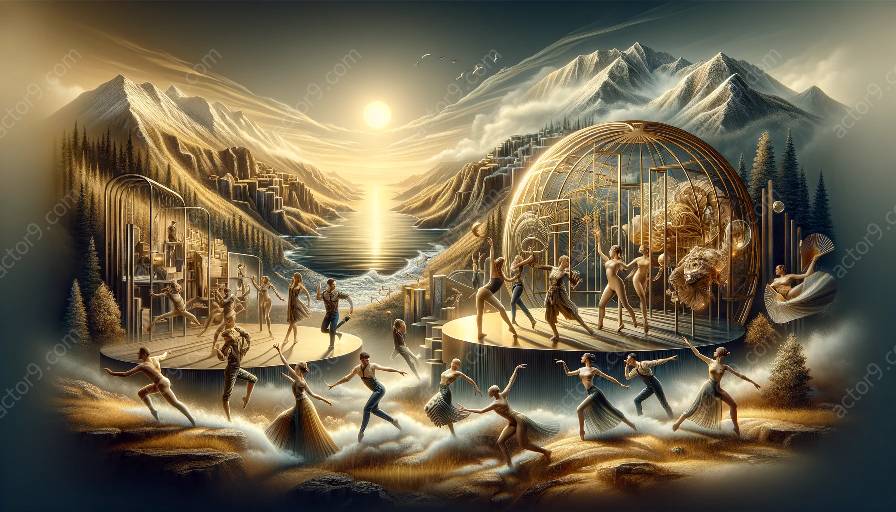The concept of physical awareness and expression in actor training is a fundamental aspect of developing an actor's craft, creativity, and authenticity on stage. In this article, we will explore in detail the role of physical awareness and expression in actor training, examining its convergence with techniques in physical theatre and its significance within the context of physical theatre itself.
The Significance of Physical Awareness and Expression in Actor Training
Physical awareness and expression in actor training encompass an extensive array of skills and practices that are vital for actors to master. A heightened awareness of their body, movement, and physical presence enables actors to communicate effectively through non-verbal means.
Engaging in physical expression allows actors to convey emotions, thoughts, and intentions through posture, gestures, and spatial relationships, thereby creating a profound impact on the audience. Furthermore, physical awareness facilitates an actor's ability to inhabit and embody characters authentically, bringing depth and realism to their performances.
Techniques in Physical Theatre
The techniques in physical theatre encompass a diverse range of methods and practices aimed at integrating the physicality of performance with theatrical storytelling. These techniques often draw inspiration from various movement disciplines, such as dance, yoga, martial arts, and mime, to cultivate a versatile and expressive physical vocabulary for actors.
Through techniques in physical theatre, actors are encouraged to explore and expand their physical capabilities, developing a heightened kinesthetic awareness and fluency in expressing narratives through the body. This synthesis of movement, text, and visual imagery exemplifies the innovative potential of physical theatre as a distinct form of theatrical expression.
Convergence with Physical Theatre
The convergence of physical awareness and expression in actor training with the ethos of physical theatre is a harmonious blend that fosters a holistic approach to performance. Physical theatre, characterized by its emphasis on the body as the primary medium of storytelling, aligns closely with the principles of physical awareness and expression in actor training.
The collaborative nature of physical theatre demands a profound understanding of ensemble dynamics, spatial awareness, and physical coordination, all of which are honed through rigorous actor training. Additionally, the symbiotic relationship between physical theatre and actor training enriches the creative potential of performers, enabling them to engage in innovative and imaginative explorations of physical storytelling.
Experiential Learning and Application
The cultivation of physical awareness and expression in actor training transcends theoretical understanding, emphasizing experiential learning and practical application. Through a combination of physical exercises, improvisational activities, and somatic practices, actors are encouraged to embody the principles of physicality, developing a nuanced understanding of the connections between body, emotion, and intention.
The integration of techniques from physical theatre serves as a catalyst for actors to immerse themselves in the expressive possibilities of the body, thereby enriching their performances with an enhanced physical presence and dynamism. This hands-on approach to learning facilitates a deep-rooted integration of physical awareness and expression into the actor's creative repertoire.
Conclusion
Physical awareness and expression play a pivotal role in shaping the artistic prowess of actors, serving as the cornerstone of their ability to communicate, emote, and captivate audiences through the visceral language of the body. This convergence with techniques in physical theatre and physical theatre itself amplifies the depth and breadth of an actor's craft, propelling them towards a more profound and impactful mode of storytelling.




































